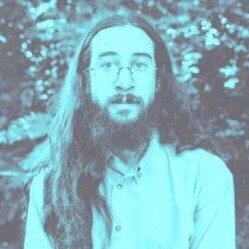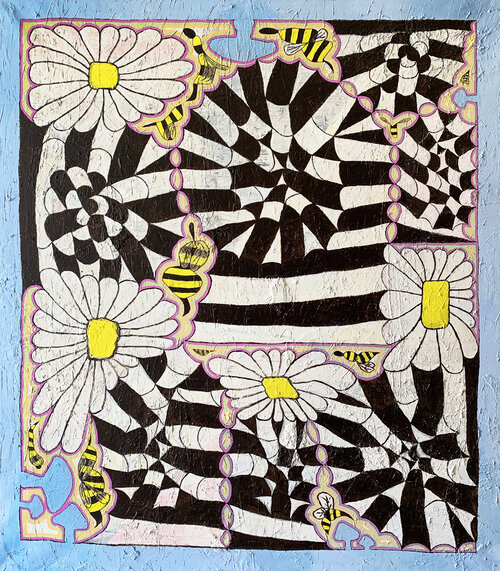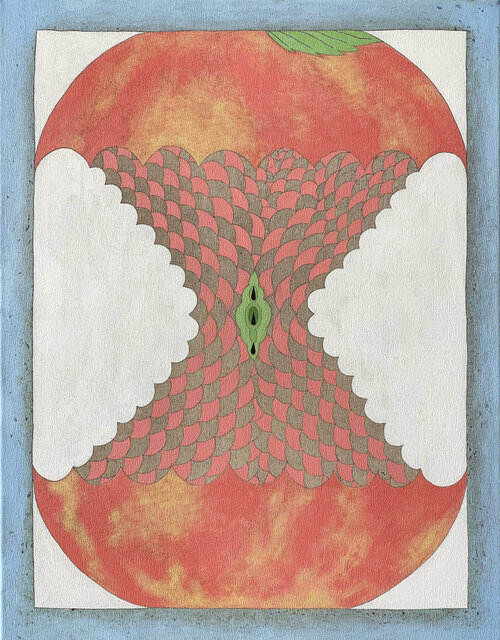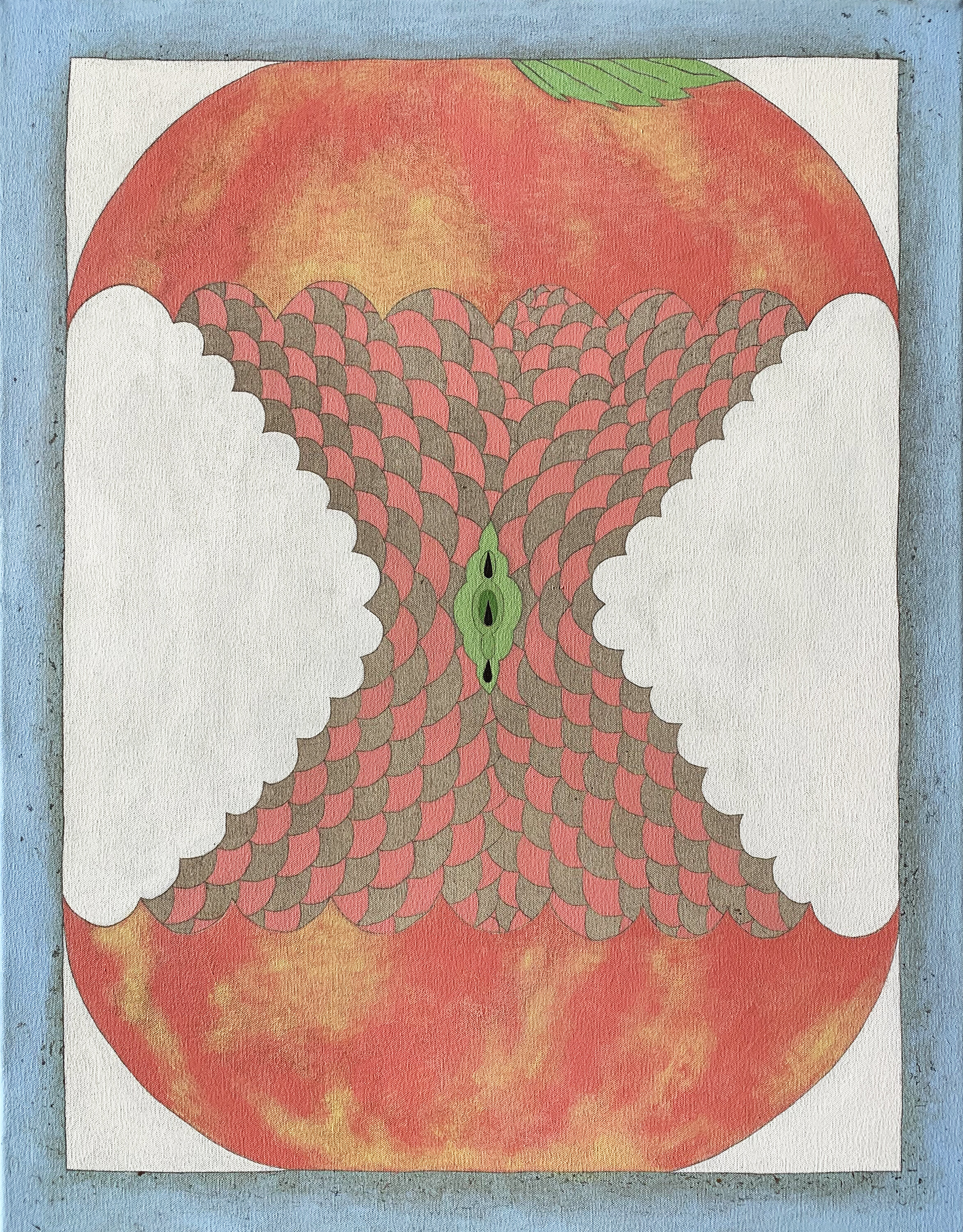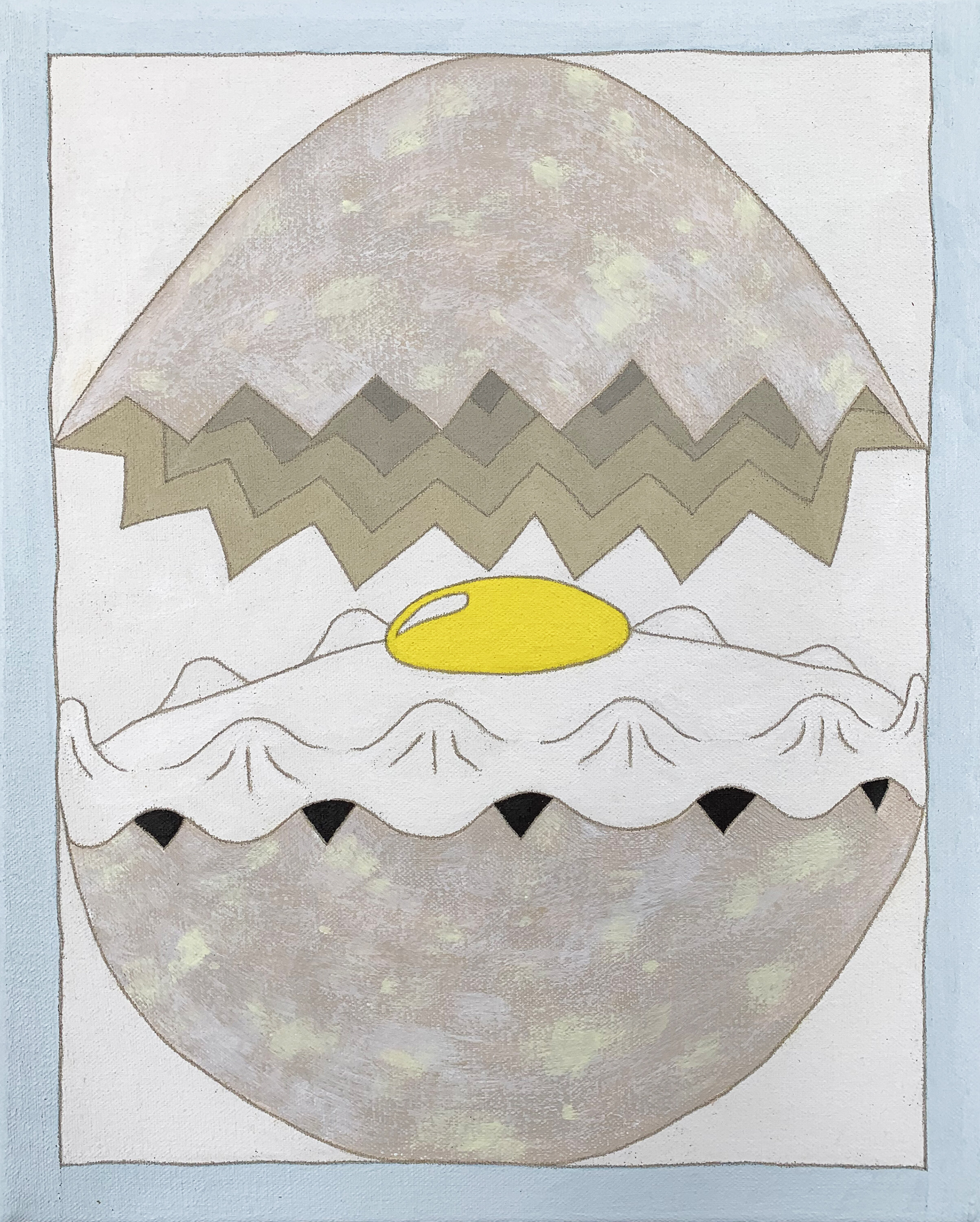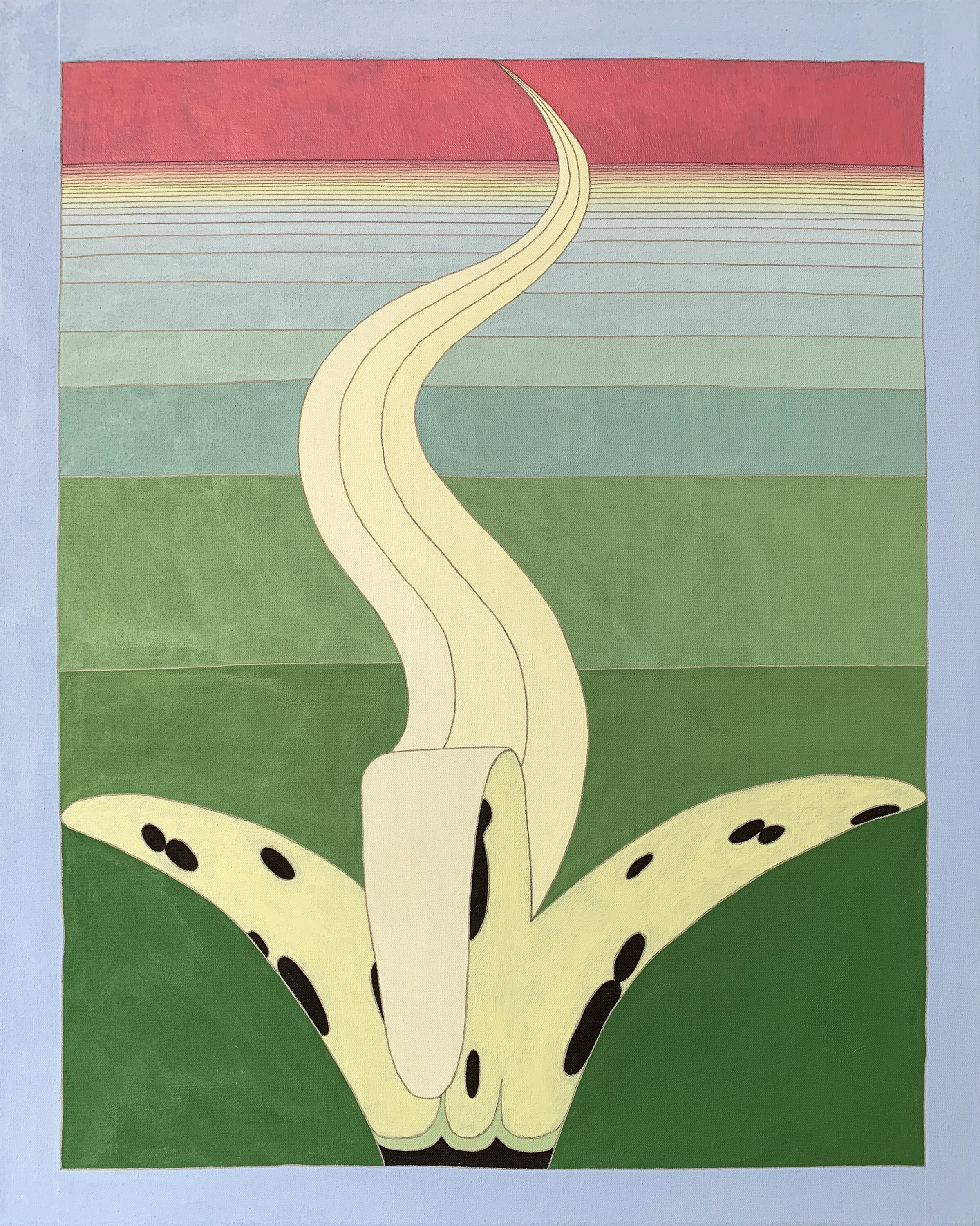I had the pleasure of having artist David Onri Anderson as a student when I taught History of Photography at Watkins College of Art and Design. Anderson was a great student who sat in the front row, and would casually sketch during class which, to be fair, was a three-hour lecture course that started at 8:30 a.m. Mondays. Rough. (It was also my first year teaching—double rough.) Fast forward a few years to find Anderson as one of the most celebrated young artists in Nashville. His paintings present unexpected associations between one’s personal experience and nature, investigations into the interconnectedness that binds all matter together. In his exhibition Fragile as Fruit, Anderson pushes familiar whole food imagery into abstraction in a nod of gratitude to those which nourish and thus enable creative (and really all) life activity. In the following interview, Anderson discusses his process, inspirations, and motivations behind this body of work.
What is your earliest memory of your burgeoning interest in art?
When I was about 4 years old, I remember seeing a puddle and imagining a little world in that puddle with these little green floating creatures that have purple crafts that help them float around. I made little drawings of this idea with markers.
How have you witnessed this early interest reveal itself in your current work?
I have realized that my strongest approach is to come right from the initial inspiration, keep it simple and direct, and make it something I want to live and grow with.
What motivated and/or inspired your big idea for the group exhibition Fragile as Fruit?
Lately, I have been feeling the urge more and more to connect with nature and let it guide my life. I did a show in 2018 with Elephant Gallery called Earthbound and that show was the start of a soul searching journey through painting and making to reconnect with my environment and its diversity of life in all its unexpected forms and frequencies. With this continued exploration, I’ve come to work with fruit as a rich metaphor for a character or place caught in a drama between natural and otherwise unnatural forces.
“I’ve come to work with fruit as a rich metaphor for a character or place caught in a drama between natural and otherwise unnatural forces.”
How does this collection of work demonstrate a departure from some of your earlier art?
I work slowly and gradually, so the departure is always subtle with surprises peppered throughout (I have to get surprised every now and then in order to continue). This collection has moments where the atmosphere or setting or time becomes more apparent and the banana peel or apple core will start to feel more introverted or like it has its own personality and inner life, because in reality they do, they came from a tree and there’s a whole story to its history, how it got to where it is now, etc. I am seeking out the personhood of these seeming objects, I am showing subject-ness of these discarded characters. I feel these new paintings might be a bit more filthy and outgoing and beautiful in a complex way. There are also a dozen small paintings of eggs. I think this body of work is very funny and honest and hits me in the stomach in a way that feels fresh to me.
How did your work come to find itself in at the David Lusk gallery?
I think it was after my solo show at Elephant Gallery they became interested in my work. Maybe David Lusk had a dream one night where a grim reaper appeared to him and demanded that he look at my paintings and think about it for a while and then sign me. Who knows, I hope it was a good mix of both.
Has the southeastern US, and specifically the city of Nashville, had any particular impact on your art? Why or why not?
Definitely. I was born in Nashville, so it’s sometimes hard for me to think of any other place, it’s where I’ve always lived and made things. On the other hand, my mother is from France and her Dad is from Algeria, so there is a lot of family culture that is inherited and leaves many impressions.
What insights or realizations, if any, do you hope your viewers will understand when they observe your art?
I hope they realize how much life and magic is in each little thing and in each present moment and how they can participate at any given time, they have the power.
On the flip side, what are some aspects of your work that may not be evident to your audience based solely on its surface/appearance?
The sacrifices and soul searchings it took to make the paintings and to come to these realizations through continuation of the practice. It’s all personal discoveries lost and found within the practice and recorded through each painting made.
Building upon the previous question, what method would you prefer one take when making a critique of your art: a formal, contextual, or expressive approach? Why?
I don’t have any preference for their critique, but I would say my art isn’t trying to be clever or academic. It is more of the psychic and subconscious realm, dream states perhaps. At the same time I think of them as vessels of experienced reality mixed with constructed questions, stories, fantasies and theories.
“...my art isn’t trying to be clever or academic. It is more of the psychic and subconscious realm, dream states perhaps. At the same time I think of (my artwork) as vessels of experienced reality mixed with constructed questions, stories, fantasies and theories.”
Who and/or what are some of your biggest artistic influences? How? Why?
My first influence is how nature works, stars, planets, weather, physics, fungus, rocks, trees, animals, all the natural phenomena that I continue to become aware of. My family and friends are very important to my creative health, ex-girlfriends have really taught me a lot and inspired newness. I’m really into the old cave paintings and images carved on rocks by indigenous peoples of North and South America. Tantric paintings from India, Agnes Martin, Bill Traylor, Forrest Bess, Hilma Af Klint, Gees Bend Quilts. All of these lives inspire me and encourage me to make what I make.
How does your work demonstrate departure from the above influences?
I have to turn back to myself, to my life, my dreams and visions and think of how I can participate in my own way. I started realizing I’ve been eating an apple and a banana almost every single day for years and years. This is very important because those have been my energies sustaining my life. So I decided to make paintings that explore the energetic ways of these fruit that are a big part of my life and life in a broader sense. They connect me back to nature, to a specific environment that has personhood.
What upcoming projects and/or exhibitions do you have planned within the next 12 months?
Always doing curatorial stuff with my project space Electric Shed. I have some plans cooking up for a group show in NYC in 2020. My gallery in Los Angeles, Patrick Painter just moved to central downtown and we plan to do something again, no dates for that yet.
What are your goals for your art within the next 12 months?
Keep it real. Don’t get distracted by capitalist mechanics and trends.
Goals for your life in general?
To paint and live a healthy, sustainable life full of love and music.
Since we’ve brought up life in general, what’s your favorite food and drink?
I love this dish my mother makes called shakshouka and iced mint tea from the garden to drink with it, comfort food from our North African roots.
Band(s) and/or record(s)?
Sade.
Movie(s)?
I’ve been watching a lot of Les Blank documentaries lately, those are beautiful. Chulas Fronteras was a film by Les Blank that the Belcourt had shown recently, and that got me on fire for his documentaries.
“I feel these new paintings might be a bit more filthy and outgoing and beautiful in a complex way... this body of work is very funny and honest and hits me in the stomach in a way that feels fresh to me.”
Hang spot(s)?
Radnor Lake, my studio, art crawls, the old streets of Nashville
Weekend activity(ies)?
Usually a bit of painting, hiking, cooking, reading, playing music. Maybe some debauchery.
Money’s not a factor, you will burn no social bridges, and you’re guaranteed a comfortable lifestyle no matter what—where would you live, and what would you do?
In the tomb of King Tut!
Anything else that you’d like to add?
Keep Nashville spicy y’all. Thanks a million for doing this!!!
To learn more about David Onri Anderson and his work, please visit him online at www.davidonrianderson.com and at his Instagram page @davidonri.
Image selections from Anderson’s exhibition Fragile As Fruit at David Lusk gallery in Nashville, TN, on view October 1 - 26, 2019. Instagram @DavidLuskGallery.

